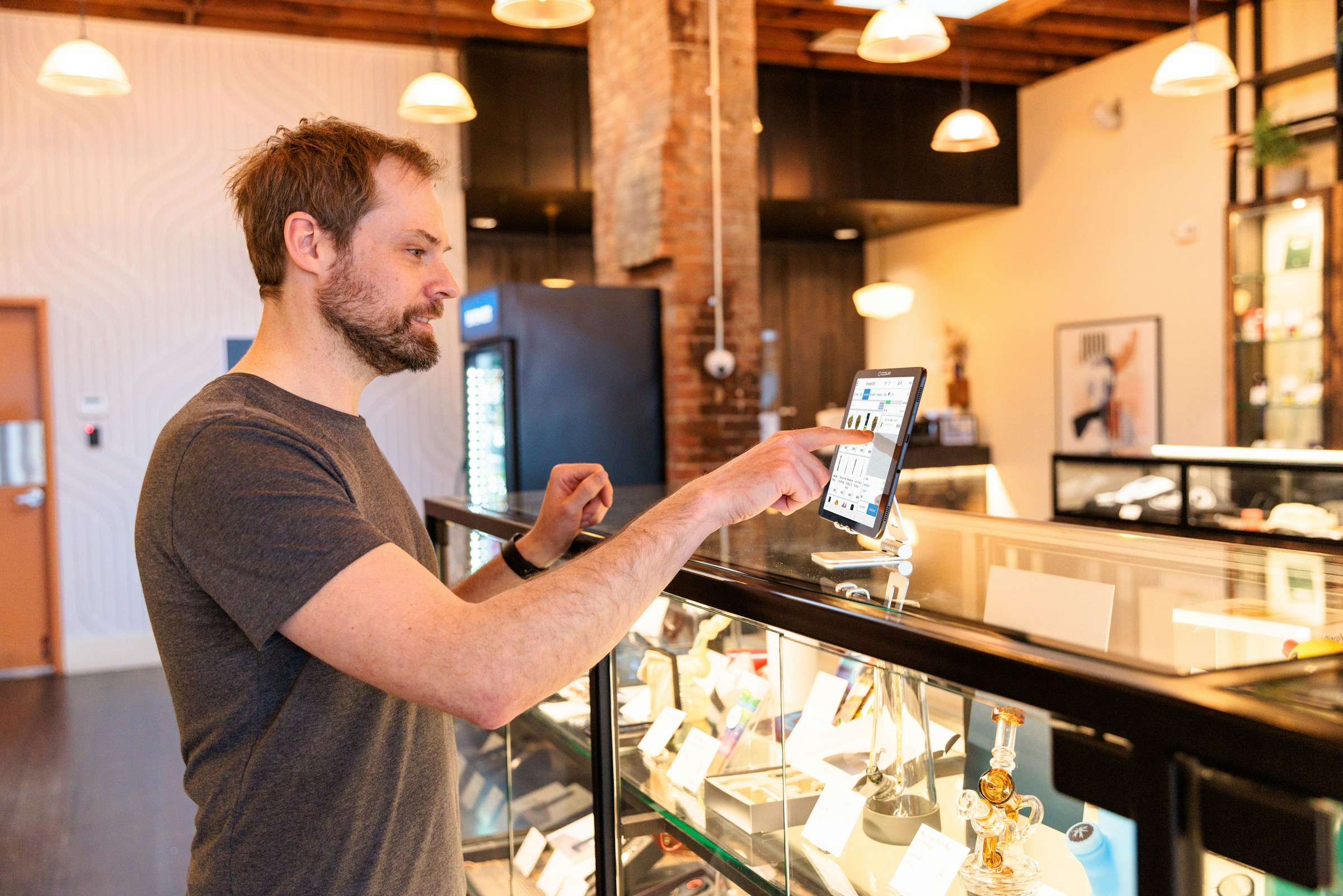Creating an exceptional customer experience in Leicester’s retail shops is essential for standing out in a competitive market. Customers today crave connection, personalization, and seamless service. Businesses can adopt innovative strategies tailored to local preferences, enhancing engagement and fostering loyalty. From utilizing technology to improve convenience to designing inviting atmospheres, these actionable approaches can transform shopping into a memorable experience. Discover how Leicester retailers can elevate their customer interaction and thrive in a dynamic retail landscape.
Understanding Customer Experience in Retail
Customer experience is a pivotal element in the retail industry, shaping how consumers perceive and interact with brands. It encompasses every touchpoint a customer has with a retailer, from initial awareness to post-purchase interactions. In the retail sector, particularly in places like Leicester, customer experience is crucial for fostering loyalty and driving sales.
Also to read : Top Techniques for Effectively Managing Intellectual Property in Creative Agencies Based in London
In Leicester, retail strategies are evolving to meet the unique demands of its diverse consumer base. Retailers are increasingly adopting digital solutions to enhance in-store experiences, such as personalised recommendations and seamless checkout processes. These innovations aim to create a more engaging and efficient shopping journey, catering to the modern consumer’s expectations.
However, Leicester retailers face unique challenges in improving customer experience. The city’s vibrant market scene, like the renowned Leicester market, presents both opportunities and hurdles. While the market attracts a broad spectrum of shoppers, maintaining consistent service quality across various stalls can be difficult. Additionally, integrating traditional market charm with modern retail expectations requires a delicate balance.
In the same genre : Boosting Readership: Innovative Content Marketing Strategies for London Publishers
To overcome these challenges, Leicester retailers must prioritise understanding their customer base, leveraging data-driven insights to tailor their retail strategies. By addressing specific consumer needs and preferences, retailers can enhance the overall customer experience, ensuring long-term success in a competitive market.
Leveraging Local Insights for Customer Engagement
Understanding the nuances of local engagement is essential for Leicester retailers aiming to enhance customer experiences. By tapping into the local culture and community, retailers can tailor their offerings to resonate more deeply with their audience. This approach not only fosters a sense of belonging among consumers but also strengthens brand loyalty.
Importance of Local Knowledge
Local knowledge allows retailers to customise their strategies to meet the specific needs of the Leicester community. This might include recognising local holidays, supporting community events, or understanding regional preferences. Such insights enable retailers to create a shopping experience that feels personal and relevant to local customers.
Successful Engagement Strategies
Several Leicester retailers have excelled in community involvement. For instance, collaborating with local artists to showcase their work in-store or hosting events that celebrate Leicester’s cultural diversity. These initiatives not only attract foot traffic but also build a positive brand image.
Building Partnerships
Forming partnerships with local businesses and organisations can amplify customer engagement efforts. By working together, retailers can create unique experiences that benefit both parties. For example, a retailer might partner with a local café to offer exclusive discounts to each other’s customers, enhancing the shopping experience and fostering a supportive local business ecosystem.
Implementing Technology to Enhance Customer Experience
In the evolving landscape of retail, retail technology plays a crucial role in transforming the customer experience. By embracing digital transformation, retailers can significantly improve how they interact with customers, from personalised marketing to efficient service delivery.
Technology Trends in Retail
The adoption of customer service tools like AI chatbots, virtual try-ons, and mobile payment systems is reshaping the shopping experience. These tools not only streamline operations but also provide customers with a seamless journey, meeting their expectations for speed and convenience.
Leicester Case Studies
Several Leicester shops are pioneering the use of retail technology to enhance customer engagement. For example, a local clothing store has implemented virtual fitting rooms, allowing customers to try on clothes digitally. This not only improves customer satisfaction but also reduces return rates, showcasing the practical benefits of technology integration.
Best Practices for Integration
To successfully integrate digital transformation into customer service, retailers should focus on:
- Understanding customer needs through data analysis
- Training staff to use new technologies effectively
- Ensuring that technology enhances rather than complicates the customer journey
By following these best practices, retailers can leverage technology to create a more personalised and efficient shopping experience, ultimately boosting customer loyalty and sales.
Personalization Strategies for Retail Success
In the competitive retail landscape, personalization has emerged as a key strategy for success. By crafting tailored experiences, retailers can significantly enhance customer satisfaction and loyalty. Personalization involves using customer data to deliver unique shopping experiences that resonate with individual preferences.
Benefits of Personalized Shopping Experiences
Personalized shopping experiences offer numerous benefits. They make customers feel valued and understood, which fosters a stronger connection with the brand. When shoppers receive recommendations and offers that align with their interests, they are more likely to engage and make purchases. This approach not only boosts sales but also encourages repeat visits, reinforcing customer loyalty.
Techniques for Collecting and Utilizing Customer Data
Responsible collection and use of customer data are crucial for effective personalization. Retailers can gather data through loyalty programs, purchase histories, and online interactions. By analysing this information, they can identify patterns and preferences, enabling them to tailor marketing efforts accordingly. It’s essential to maintain transparency and secure customer consent to build trust.
Examples of Personalized Marketing Campaigns in Leicester
Several Leicester retailers have successfully implemented personalized marketing campaigns. For instance, a local bookstore uses purchase data to recommend new releases to frequent buyers. Another example is a boutique that sends exclusive offers to customers based on their shopping habits. These initiatives demonstrate the power of personalization in creating meaningful customer relationships.
Training Staff for Exceptional Service
In the quest for customer service excellence, well-trained staff are indispensable. They are the frontline ambassadors of a brand, directly influencing customer perceptions and experiences. Staff training is crucial in equipping employees with the skills and knowledge necessary to meet and exceed customer expectations.
Leicester retailers have implemented innovative training programs to foster employee engagement and enhance service quality. These programs often include interactive workshops, role-playing scenarios, and continuous learning opportunities. By investing in comprehensive training, retailers ensure their staff are adept at handling diverse customer interactions, from addressing inquiries to resolving complaints effectively.
The impact of staff training on customer satisfaction is measurable and significant. Retailers can track improvements through customer feedback, satisfaction surveys, and performance metrics. Enhanced training correlates with increased customer loyalty and repeat business, as satisfied customers are more likely to return and recommend the store to others.
Additionally, engaged employees tend to display higher job satisfaction and motivation, which translates into better service delivery. By prioritising employee engagement through effective training, Leicester retailers not only improve the customer experience but also cultivate a positive workplace culture that benefits both staff and customers alike.
Creating an Inviting Store Environment
An inviting retail ambiance is crucial for attracting and retaining customers. The store layout plays a significant role in shaping this environment, as it influences customer flow and comfort. A well-designed layout not only facilitates easy navigation but also encourages prolonged visits, enhancing overall customer comfort.
Elements of a Welcoming Store Atmosphere
A welcoming store atmosphere combines several elements:
- Lighting: Soft, warm lighting can create a cosy and inviting feel.
- Colour scheme: Harmonious colours evoke positive emotions and set the store’s tone.
- Music: Carefully selected background music can enhance the shopping experience, making it enjoyable.
Case Studies of Leicester Shops
Leicester shops have demonstrated innovative approaches to creating unique store layouts. For instance, a local boutique employs an open floor plan with designated zones for different product categories, allowing customers to explore effortlessly. Another store incorporates interactive displays that engage the senses, making the shopping experience memorable.
Importance of Sensory Experiences
Sensory experiences are vital in retail settings. They engage customers on multiple levels, creating an emotional connection with the brand. From the scent of freshly brewed coffee to the tactile feel of fabrics, sensory elements can significantly impact customer perceptions and encourage repeat visits.
Utilizing Customer Feedback for Continuous Improvement
Customer feedback is a vital tool for retailers seeking to enhance their offerings and stay competitive. Collecting feedback can be achieved through various methods, such as surveys, suggestion boxes, and digital platforms, allowing retailers to gather insights directly from their consumers.
Once feedback is collected, it is crucial to analyse it effectively to identify areas for improvement. This involves categorising feedback into themes, prioritising issues based on frequency and impact, and developing actionable strategies. By doing so, retailers can address specific pain points and enhance customer satisfaction.
In Leicester, some retailers have successfully implemented feedback loops, demonstrating the power of customer insights. For instance, a local electronics store introduced a survey system that allowed customers to rate their shopping experience. By acting on the feedback received, they improved their product displays and customer service, resulting in higher satisfaction scores and increased sales.
These success stories highlight the importance of a structured approach to customer feedback. By continuously gathering and analysing feedback, retailers can make informed decisions that drive improvement and foster customer loyalty. This iterative process not only benefits the retailer but also enhances the overall shopping experience for customers.
Omnichannel Strategies for Seamless Customer Experience
In today’s retail landscape, omnichannel retail is essential for creating a cohesive and engaging customer journey. This approach integrates various shopping platforms, ensuring a seamless experience whether customers shop online, in-store, or via mobile.
Definition and Importance
Omnichannel strategies involve synchronising all retail channels to provide a unified shopping experience. It allows customers to transition effortlessly between platforms, such as browsing online and purchasing in-store. This integration is crucial for meeting modern consumer expectations, enhancing convenience, and fostering loyalty.
Examples from Leicester Retailers
Leicester retailers are leveraging integrated shopping to enhance customer engagement. For instance, a local department store offers online reservations for in-store pickups, blending digital and physical shopping. Another retailer uses mobile apps to provide personalised promotions, encouraging both online and offline interactions.
Challenges and Solutions
Implementing omnichannel experiences poses challenges, such as ensuring consistent inventory management and data integration across platforms. Solutions include investing in robust technology systems and training staff to handle cross-channel customer interactions. By addressing these challenges, retailers can create a seamless and satisfying customer journey, ultimately boosting sales and customer retention.
Marketing Strategies to Attract and Retain Customers
In the competitive retail landscape of Leicester, effective retail marketing is essential for attracting and retaining customers. Retailers are adopting innovative promotional strategies to capture consumer attention and build lasting relationships.
One key tactic is the use of targeted promotions to foster customer loyalty. By analysing consumer data, retailers can personalise offers and incentives, ensuring they resonate with individual preferences. This approach not only enhances engagement but also encourages repeat business, as customers feel valued and understood.
Successful marketing campaigns in Leicester demonstrate the power of well-executed strategies. For instance, a local fashion retailer launched a loyalty program offering exclusive discounts and early access to new collections. This initiative not only increased customer retention but also boosted brand advocacy, as satisfied customers recommended the store to others.
Another example is a Leicester grocery store that implemented a digital marketing campaign, utilising social media to promote weekly specials and in-store events. This strategy effectively increased foot traffic and sales, showcasing the impact of integrating online and offline marketing efforts.
By leveraging these retail marketing tactics, Leicester retailers can strengthen their market presence, attract new customers, and cultivate customer loyalty, ensuring long-term success.
Measuring Success in Customer Experience
Evaluating customer experience in retail requires precise metrics and performance evaluation tools. Key performance indicators (KPIs) are essential for assessing how well a retailer meets customer expectations. Customer experience metrics such as Net Promoter Score (NPS), Customer Satisfaction (CSAT), and Customer Effort Score (CES) provide valuable insights into customer perceptions and loyalty.
Key Performance Indicators for Customer Experience
KPIs like NPS measure the likelihood of customers recommending a brand, while CSAT gauges satisfaction levels with specific interactions. CES assesses the ease of customer interactions, offering a comprehensive view of customer satisfaction.
Tools and Methods for Measuring Satisfaction
Retailers can employ surveys, feedback forms, and digital analytics tools to gather data on customer experience metrics. These methods help identify trends and areas needing improvement, ensuring a data-driven approach to enhancing customer satisfaction.
Real-Life Examples from Leicester
Leicester retailers are leveraging these tools to track and improve performance evaluation. For example, a local electronics store uses NPS surveys to refine its service offerings, resulting in higher customer loyalty. Another retailer employs digital analytics to monitor in-store interactions, adapting its strategies to meet customer needs effectively. These practices highlight the practical benefits of robust customer experience metrics.











